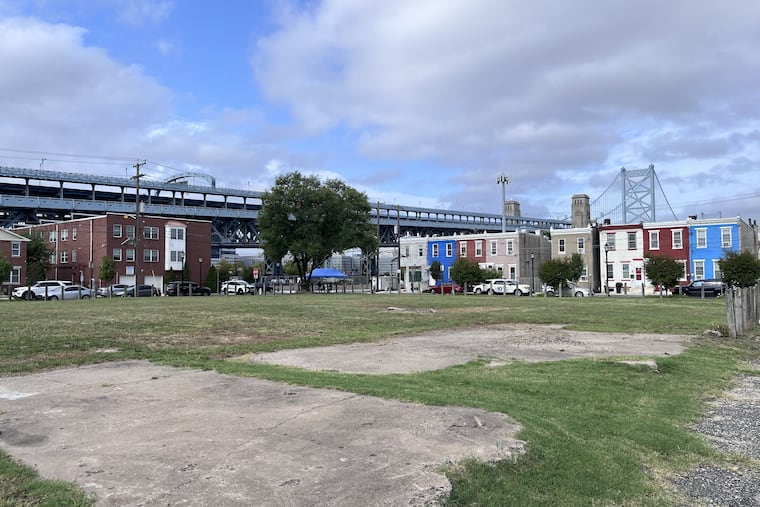Toxic paper company site in Camden gets $1M for cleanup to build homes
Camden Lutheran Housing wants to build 15 affordable single-family homes at the former site of the West Jersey Paper Manufacturing Company.

The U.S. Environmental Protection Agency has awarded a $1 million grant to clean up the site of a defunct paper manufacturer in Camden contaminated by heavy metals and other toxins to make it ready for construction of 15 new affordable homes.
The EPA announced Thursday that it had selected the nonprofit Camden Lutheran Housing Inc. for the brownfields cleanup grant funded by the federal Bipartisan Infrastructure Law.
The 0.62-acre site at Elm and Front Streets, in the shadow of the Ben Franklin Bridge in North Camden, was operated by the West Jersey Paper Manufacturing Co. from 1850 to 1967. After that, it was used by Latex Fiber Industries Inc. from 1967 to 1974. Both companies used the site for paper milling and pulp operations. The buildings were razed in 1974.
Currently, the site is vacant and contaminated by heavy metals, arsenic, polycyclic aromatic hydrocarbons, and polychlorinated biphenyls.
Camden Lutheran Housing plans to build affordable single-family homes at the location, with the goal of helping revitalize the neighborhood. It is one of 212 brownfield sites in the city, according to the state Department of Environmental Protection.
“This project is a longstanding and ongoing collaboration among partners including the New Jersey Department of Environmental Protection, the New Jersey Economic Development Authority, Camden County and the City of Camden,” Brandi T. Johnson, Camden Lutheran Housing Inc. executive director, said in a statement. “Now, with this funding from the United States Environmental Protection Agency, we are another significant step closer to reclaiming this land for a positive and necessary use that will impact the future of North Camden.”
The site was used to store fuel oil, other oils, and chemicals. The city, which demolished the buildings, foreclosed on the property in 1976, according to Camden Lutheran Housing’s grant application.
DEP assessments of the site in the 1980s and 1990s showed the soil was contaminated with lead, cadmium, zinc, arsenic, polycyclic aromatic hydrocarbons, and polychlorinated biphenyls at concentrations exceeding state standards. The land contains large amounts of fill and buried debris that is also contaminated five feet to 12 feet deep.
The lot is surrounded by residential housing with a child-care facility, grocery store, and a public park nearby. It slopes toward the Delaware River, less than one-quarter mile away, and is designated by the Federal Emergency Management Agency to be in a flood hazard area.
The cleanup is part of Camden Lutheran Housing’s plan to build 42 homes in North Camden with garages on the first floor, and living space on the second and third floors.
The grant is part of President Joe Biden’s Investing in America agenda. The EPA selected four communities in New Jersey that together will receive $3 million for brownfield cleanup. The Camden Redevelopment Agency received $500,000 to assess pollution along Federal Street in East Camden Neighborhood.
And the Monmouth Conservation Foundation in Red Bank, and Borough of Woodbine, Cape May County, both received grant money.
Camden Mayor Victor Carstarphen said the project is part of a plan to clean up brownfields and “transition sites from our former industrial past into cleaner uses.”
Olivia Glenn, EPA regional chief of staff, said the Bipartisan Infrastructure Law allocated $1.5 billion “to promote equitable environmental health, economic growth, and job creation nationwide.”
And U.S. Rep. Donald Norcross said the grant would help clean up the neighborhood and “help our families access safe, affordable housing.”